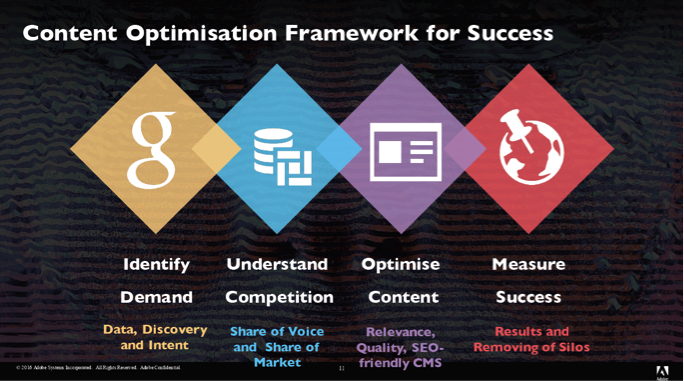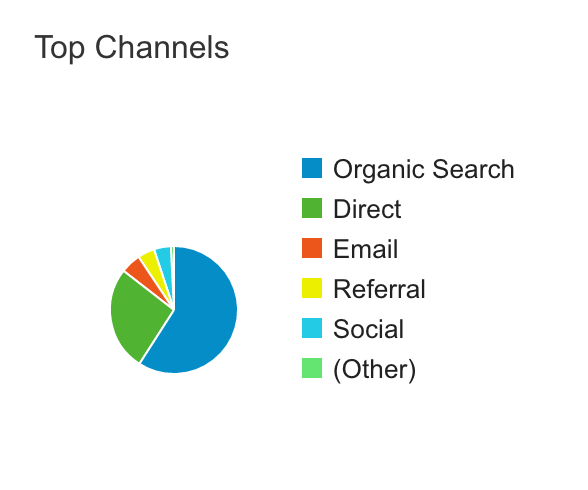According to research conducted by my company, BrightEdge, an estimated 51% of the traffic arriving on your website today originates from organic search.
This means that your position on the SERP has more impact on your site traffic than paid search, email, social media, and direct visitors combined. Gaining this attention is critical, but it is also quickly becoming more challenging.
An estimated 88% of B2B companies and 77% of B2C companies say that they use content marketing.
In both groups, about half say that they will be increasing their budgets in the coming year. The increased budget will lead to more content, and the digital ecosystem is about to become even more saturated.
Brands need to find ways to stand out despite this massive amount of content, and SEO is an important part of that equation.
SEO, however, presents problems for many markets and their departments. To begin, convincing those who are not involved with SEO – especially those in the c-suite – of the value of these digital efforts to gain the budget needed, can be a challenge.
The industry itself is also continually changing as the algorithm and customer expectations evolve.
Understanding the four pillars of SEO management however, will empower to you to appropriately target your audience, see success, and grow your organization.
Here is what all marketers should know…
 Image Source – Andy Betts, Adobe Summit EMEA, Optimizing Content for The Customer Journey
Image Source – Andy Betts, Adobe Summit EMEA, Optimizing Content for The Customer JourneyIdentify your demand
The first step to creating a SEO management plan is to identify your demand. This means knowing what topics interest your audience so that you can better entice them to follow your brand and make their way slowly down the funnel to conversion.
Look at the existing content on your website, to begin. You want to see which types of content and which topics are driving the most success. See what pieces correlate best with traffic, conversions, and revenue.
Look at the links between your pieces and see if your material is able to efficiently move people from one stage of the buyer’s journey to the next.
The better you understand the current performance of your content, the easier it will be to identify your strengths and weaknesses. You will also be able to clearly see what content your audience appreciates the most, and thus build on this information going forward.
You also want to take a good look at your target buyer personas and their buyer’s journey.
Make sure you have a strong idea of the market you are targeting, including their budget, pain points, and motivations.
As you are able to understand what your prospective customers want to see at each stage of the buyer’s journey, you will be able to start creating the content that fills these needs. You can then entice your customers further through the buyer’s journey.
Once you have your buyers targeted and you know what they want to see, use keyword research to find topics that generate interest within your industry.
High search rates can help you uncover topics that people want to read about. Examine the keywords and look at the existing highest ranked sites for that topic. Then select keywords that you will be able to fully develop and earn a position for on the SERP.
Benchmark the competition
It is important to remember that in SEO, not only are you trying to get your own content to rank, but to succeed, you must also outrank the competition.
For this reason, it is important to know what the other brands are doing, where they are succeeding, and where they are falling short.

When you uncover methods that are working for others, such as topics, social strategies, and types of content, you can look to incorporate some of these ideas into your own digital strategy.
Competitor sites can help you uncover new keywords that are important to customers, for example. You can also use areas where they are falling short to your advantage.
For example, if they are lacking content for a particular buyer persona, you can optimize this content on your own site to draw in a greater percentage of the customers that fit these criteria.
It can also be helpful to look at the highest ranking sites for your big keywords. Look at the type of content that ranks well and how that content has been optimized. Use this to ensure your material is fully prepared to compete in the search engines.


No comments:
Post a Comment